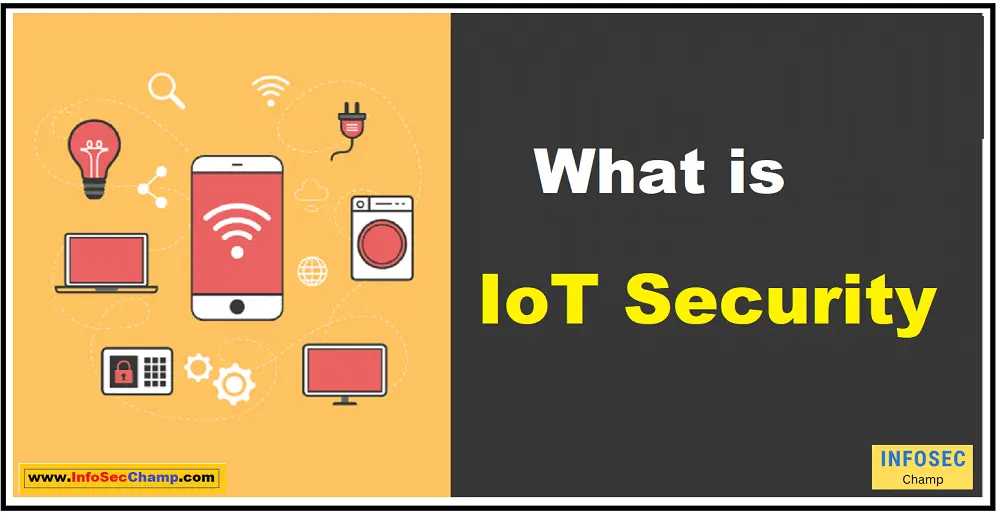IoT security is crucial for business and manufacturing organizations since the Internet of Things (IoT) describes the connectivity of devices (other than usual suspects like computers and smartphones) to the internet. These gadgets frequently feature sensors that can communicate data and collect it, and they can be managed remotely over the internet. Smart appliances, wearable fitness trackers, and smart thermostats are a few examples of IoT gadgets. IoT aims to enable data exchange and communication between devices, perhaps resulting in enhanced automation and efficiency.
What is the use of IoT in the industry?
IoT has a wide range of possible applications in this field. Here are a few illustrations:
- Asset tracking: Asset monitoring enables businesses to optimize their operations and maintenance schedules by allowing IoT devices to be attached to industrial assets (such as manufacturing equipment or company vehicles) and track their usage and location.
- Predictive maintenance: Predictive maintenance: IoT sensors can be used to continuously check on the health of industrial machinery, warning teams of potential concerns before they become major ones. In addition to extending the equipment’s lifespan, this can assist avoid expensive downtime.
- Quality control: IoT sensors can be used to monitor manufacturing processes in real-time, enabling businesses to identify and address problems as they occur. This may aid in enhancing product quality and cutting waste.
- Supply chain management: IoT devices can be used to monitor the flow of products through the supply chain, giving visibility into any bottlenecks and enabling businesses to improve their logistics and transportation processes.
- Energy management: By monitoring and maximizing energy use in industrial buildings, IoT sensors may help drive down costs and boost productivity.
These are but a few, but the industry has a wide range of other possible applications for IoT.
Why is IoT security required? | What is the need for IoT security?
IoT security is required for several reasons:
- Protection of sensitive data: Many IoT devices collect and transmit sensitive data such as personal information, financial data, and medical records. Without proper security measures in place, this data can be easily accessed and stolen by hackers.
- Prevention of unauthorized access: IoT devices are often connected to the internet, which means they are vulnerable to being accessed by unauthorized individuals. Without proper security measures, hackers can easily gain access to these devices and use them for nefarious purposes.
- Protection against malware: Malware attacks on IoT devices can have serious consequences, such as causing devices to malfunction or stealing sensitive data. Proper security measures can help prevent these attacks and protect against their effects.
- Maintaining device functionality: Without proper security measures, IoT devices can be disrupted or taken offline by hackers. This can lead to costly downtime and decreased efficiency in businesses and homes.
Overall, the need for IoT security is to ensure the safety and privacy of sensitive data, prevent unauthorized access and attacks, and maintain the proper functioning of devices.
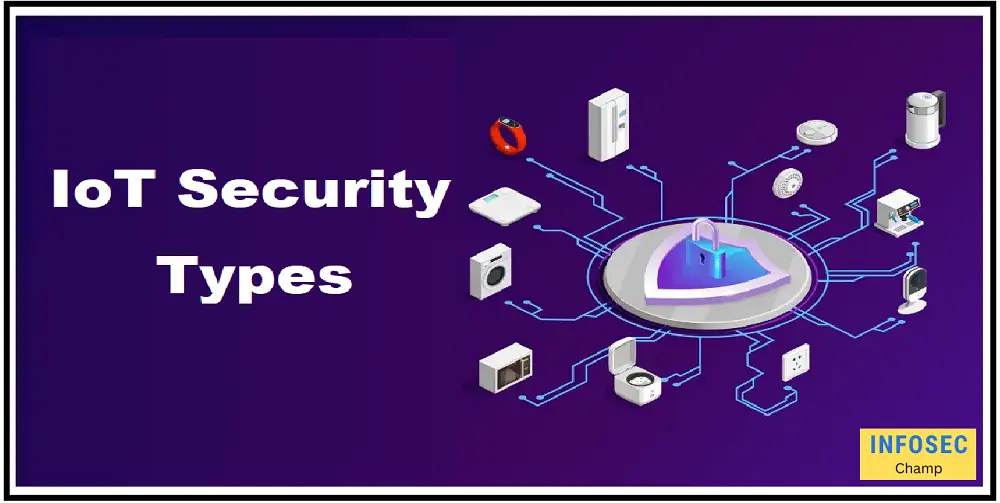
What are the types of IoT security? | Internet of things (IoT) security
There are several types of IoT security measures that can be implemented:
- Network security: This involves protecting the network that the IoT devices are connected to, such as using firewalls and secure protocols.
- Device security: This involves protecting the devices themselves, such as using strong passwords and enabling device encryption.
- Data security: This involves protecting the data that is transmitted and stored by IoT devices, such as using secure protocols and encryption.
- Identity and access management: This involves controlling and managing access to the IoT devices, such as using two-factor authentication and access control lists.
- Physical security: This involves protecting the physical devices from tampering or theft, such as using tamper-resistant hardware and secure storage.
- Cybersecurity insurance: This involves purchasing insurance to protect against the financial consequences of a cyber attack on an IoT device.
What are three IoT security threats?
- Malware attacks: Malware attacks on IoT devices can cause them to malfunction or steal sensitive data.
- Unauthorized access: Hackers can gain access to IoT devices and use them for nefarious purposes, such as using them to launch attacks on other systems.
- Denial of service attacks: Hackers can use large numbers of IoT devices to launch attacks that overwhelm and take down servers or networks, disrupting service.
What are the 5 pillars of IoT security?
The five pillars of IoT security are:
- Identity and access management: Ensuring that only authorized individuals have access to IoT devices and data.
- Network security: Protecting the network that the IoT devices are connected to from attacks and unauthorized access.
- Data security: Ensuring that data transmitted and stored by IoT devices is secure and protected from unauthorized access.
- Device security: Protecting the devices themselves from attacks and tampering.
- Physical security: Ensuring the physical security of IoT devices to prevent tampering or theft.
What are the 7 layers of IoT security? | What are the 3 types of IoT security?
There are several layers of IoT security that can be implemented:
- Identity and access management: Ensuring that only authorized individuals have access to IoT devices and data.
- Network security: Protecting the network that the IoT devices are connected to from attacks and unauthorized access.
- Data security: Ensuring that data transmitted and stored by IoT devices are secure and protected from unauthorized access.
- Device security: Protecting the devices themselves from attacks and tampering.
- Physical security: Ensuring the physical security of IoT devices to prevent tampering or theft.
- Cybersecurity insurance: Purchasing insurance to protect against the financial consequences of a cyber attack on an IoT device.
- Security monitoring and management: Regularly monitoring and managing the security of IoT devices to identify and address any potential threats.
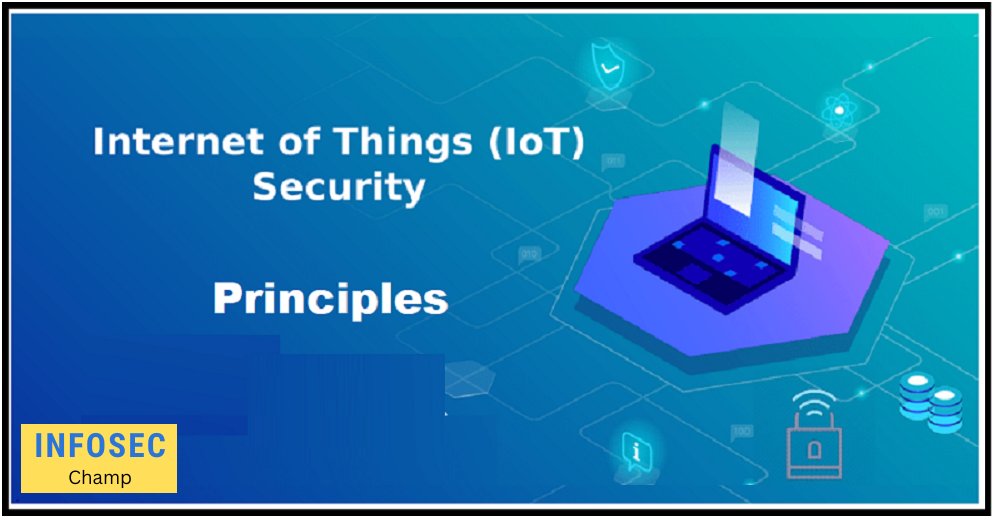
What are the 7 principles of IoT security?
The seven principles of IoT security are:
- Confidentiality: Ensuring that sensitive data transmitted and stored by IoT devices is kept private and secure.
- Integrity: Ensuring that data transmitted and stored by IoT devices is accurate and free from tampering.
- Availability: Ensuring that IoT devices are available and functioning properly for authorized users.
- Authentication: Verifying the identity of users and devices to ensure only authorized access is granted.
- Authorization: Granting access to specific devices and data based on user permissions and roles.
- Non-repudiation: Ensuring that actions taken by users and devices cannot be denied or disputed.
- Privacy: Protecting the privacy of users and their data through appropriate security measures.
What are the 3 A’s in IoT security?
The 3 A’s in IoT security refer to:
- Authentication: Verifying the identity of users and devices to ensure only authorized access is granted.
- Authorization: Granting access to specific devices and data based on user permissions and roles.
- Accountability: Ensuring that actions taken by users and devices can be traced and held accountable for any breaches or violations.
What are the 3 aims of IoT security?
The three aims of IoT security are:
- Protecting the confidentiality of sensitive data transmitted and stored by IoT devices.
- Ensuring the integrity of data transmitted and stored by IoT devices, to prevent tampering or corruption.
- Maintaining the availability of IoT devices for authorized users, to prevent disruption or downtime.
What are IoT security and its vulnerabilities? | IoT Security threats
IoT security refers to the measures taken to protect IoT devices and the data they transmit and store from cyber threats and unauthorized access. Some common vulnerabilities in IoT security include:
- Lack of secure default settings: Many IoT devices come with weak default passwords and no encryption, making them easy targets for hackers.
- Lack of software updates: Failing to keep devices updated with the latest security patches can leave them vulnerable to attacks.
- Insecure communication protocols: Using insecure communication protocols, such as unencrypted networks, can make it easy for hackers to intercept and steal data.
- Lack of device authentication: Failing to implement proper authentication measures can allow unauthorized individuals to access and control devices.
- Physical tampering: Without proper physical security measures, devices can be tampered with or stolen, leading to potential data breaches.
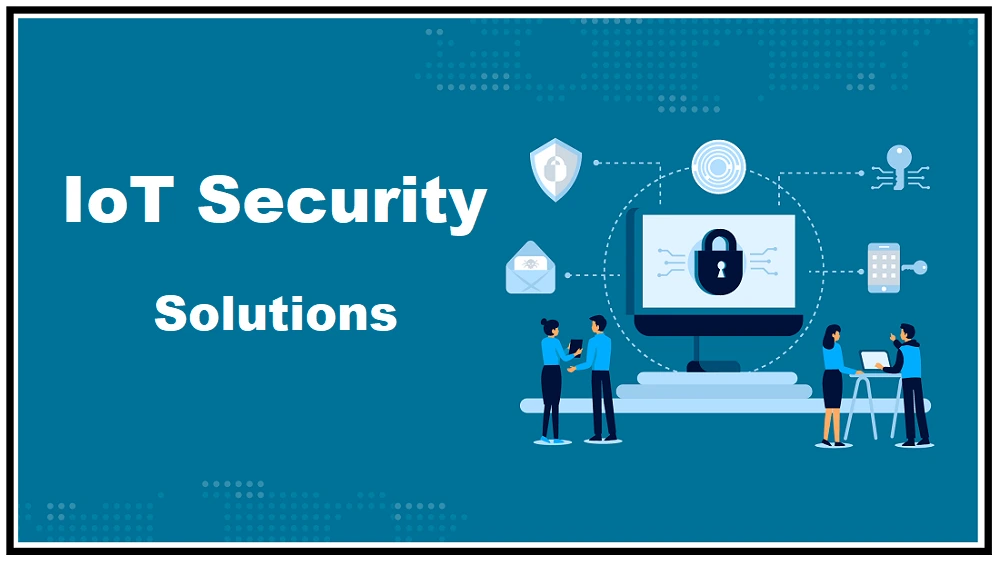
Top 20 IoT Security Solutions
Here are 20 potential IoT security solutions:
- Use strong passwords and enable device encryption.
- Use secure communication protocols.
- Implement identity and access management.
- Regularly update devices.
- Use cybersecurity insurance.
- Implement security monitoring and management.
- Use physical security measures.
- Use firewalls to protect networks.
- Use secure protocols for data storage.
- Implement access control lists.
- Use two-factor authentication.
- Use intrusion detection and prevention systems.
- Use virtual private networks (VPNs).
- Use sandboxing to isolate devices.
- Use network segmentation to limit access to certain devices.
- Use white/blacklisting to block or allow access to specific devices or IP addresses.
- Use endpoint protection to secure devices.
- Use application security measures to protect against vulnerabilities in software.
- Use security information and event management (SIEM) systems to monitor for threats.
- Use network access control systems to grant access to devices based on predetermined criteria.
IoT security examples
Here are a few examples of IoT security measures:
- Using strong passwords and enabling device encryption: This can help prevent unauthorized access to devices.
- Using secure communication protocols: Using secure protocols, such as HTTPS and SSL, can help protect data transmitted between devices.
- Implementing identity and access management: Using two-factor authentication and access control lists can help ensure that only authorized individuals have access to devices.
- Regularly updating devices: Keeping devices updated with the latest security patches can help prevent vulnerabilities from being exploited.
- Using cybersecurity insurance: Purchasing insurance can help protect against the financial consequences of a cyber attack on an IoT device.
- Implementing security monitoring and management: Regularly monitoring and managing the security of IoT devices can help identify and address potential threats.
- Using physical security measures: Tamper-resistant hardware and secure storage can help prevent physical tampering or theft of devices.
IoT Security Certification
There are a number of certification programs that can assist businesses and individuals in showcasing their IoT security competence. Several instances include:
- Certified IoT Security Practitioner (CIoTSP)
- Certified IoT Security Technician (CIoTST)
- Certified IoT Security Expert (CIoTSE)
- Certified IoT Security Professional (CIoTSPr)
To obtain these certificates, people often need to pass exams and fulfill experience or academic criteria. In addition to being useful in luring and keeping top people, they can assist firms in proving their dedication to IoT security.
IoT security issues and solutions | IoT security issues
Some common IoT security issues include:
- Lack of secure default settings: Many IoT devices come with weak default passwords and no encryption, making them easy targets for hackers.
- Lack of software updates: Failing to keep devices updated with the latest security patches can leave them vulnerable to attacks.
- Insecure communication protocols: Using insecure communication protocols, such as unencrypted networks, can make it easy for hackers to intercept and steal data.
- Lack of device authentication: Failing to implement proper authentication measures can allow unauthorized individuals to access and control devices.
- Physical tampering: Without proper physical security measures, devices can be tampered with or stolen, leading to potential data breaches.
To address these issues, some potential solutions include:
- Using strong passwords and enabling device encryption.
- Using secure communication protocols.
- Implementing identity and access management.
- Regularly updating devices.
- Using cybersecurity insurance.
- Implementing security monitoring and management.
- Using physical security measures.
- Using firewalls to protect networks.
- Using secure protocols for data storage.
- Implementing access control lists.
- Using two-factor authentication.
- Using intrusion detection and prevention systems.
- Using virtual private networks (VPNs).
- Using sandboxing to isolate devices.
- Using network segmentation to limit access to certain devices.
- Using white/blacklisting to block or allow access to specific devices or IP addresses.
- Using endpoint protection to secure devices.
- Using application security measures to protect against vulnerabilities in software.
- Using security information and event management (SIEM) systems to monitor for threats.
- Using network access control systems to grant access to devices based on predetermined criteria.
IoT security challenges
There are several challenges that organizations face when it comes to securing their IoT devices:
- Lack of standardization: With the rapid growth of the IoT market, there is a lack of standardization in terms of security protocols and measures. This can make it difficult for organizations to ensure that all of their devices are secure.
- Complexity: IoT systems often involve a large number of connected devices, which can make it challenging to manage and secure them all.
- Limited security capabilities: Many IoT devices have limited processing power and storage, which can make it difficult to implement robust security measures.
- Limited visibility: It can be difficult to monitor and detect potential security threats in a complex IoT system.
- Lack of awareness: Many organizations and individuals may not be aware of the potential security risks associated with IoT devices, leading to a lack of proper security measures.
- Limited resources: Implementing effective IoT security measures can be costly and time-consuming, and many organizations may not have the resources to do so.
IoT security foundation
The IoT Security Foundation (IoTSF) is an organization that aims to promote the adoption of best practices for IoT security and to help organizations understand and mitigate the risks associated with IoT devices. The IoTSF offers a range of resources and services, including:
- Educational materials: The IoTSF provides a range of materials and guides to help organizations understand the importance of IoT security and how to implement it.
- Certification programs: The IoTSF offers several certification programs to help individuals demonstrate their expertise in IoT security.
- Training courses: The IoTSF offers training courses on a range of topics related to IoT security.
- Industry events: The IoTSF hosts events and conferences to bring together experts in the field of IoT security.
- Professional networking: The IoTSF provides a platform for professionals in the IoT security field to connect and share knowledge and expertise.
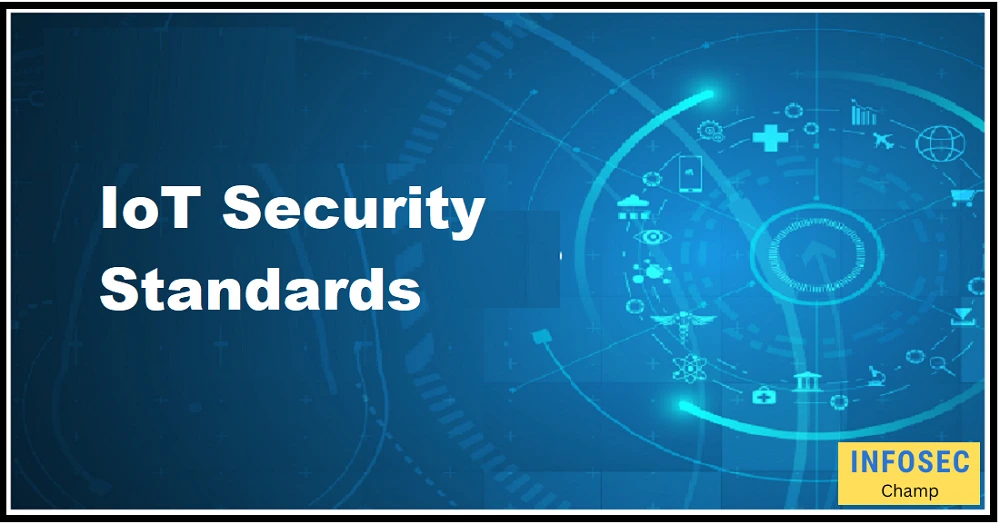
IoT security standards
There are several standards that organizations can follow to improve the security of their IoT devices. Some examples include:
- ISO 27001: This standard provides a framework for implementing an information security management system (ISMS) and covers a wide range of security measures, including those related to IoT devices.
- NIST Cybersecurity Framework: This framework provides guidance for managing cybersecurity risks and includes recommendations for securing IoT devices.
- GDPR: The General Data Protection Regulation (GDPR) provides guidelines for protecting personal data, including data collected and transmitted by IoT devices.
- IoT Security Compliance Framework (IoTSCF): This framework provides guidelines for securing IoT devices and has been adopted by the UK government.
- OWASP IoT Top 10: The Open Web Application Security Project (OWASP) has developed a list of the top 10 most critical security risks associated with IoT devices and provides recommendations for addressing them.
IoT security management includes
IoT security management includes a range of activities and measures designed to protect IoT devices and the data they transmit and store from cyber threats and unauthorized access. Some examples of IoT security management activities include:
- Implementing security policies and procedures: This can involve establishing guidelines for securing IoT devices and ensuring that all devices are compliant with these policies.
- Implementing identity and access management: This can involve using authentication and authorization measures to control access to devices and data.
- Ensuring software and firmware updates: This can involve regularly updating devices with the latest security patches to prevent vulnerabilities from being exploited.
- Implementing network security measures: This can involve using firewalls and secure communication protocols to protect the network that the IoT devices are connected to.
- Implementing data security measures: This can involve using encryption and security protocols to protect data transmitted and stored by IoT devices.
- Implementing device security measures: This can involve using tamper-resistant hardware and secure storage to protect devices from tampering or theft.
- Implementing physical security measures: This can involve securing the physical location of devices to prevent unauthorized access or tampering.
- Implementing cybersecurity insurance: This can involve purchasing insurance to protect against the financial consequences of a cyber attack on an IoT device.
- Implementing security monitoring and management: This can involve regularly monitoring and managing the security of IoT devices to identify and address potential threats.
IoT security Palo alto | Palo alto IoT security
Palo Alto Networks is a cybersecurity company that offers a range of solutions for securing IoT devices. Some of the IoT security solutions offered by Palo Alto Networks include:
- IoT Security Platform: This platform provides a range of security measures for IoT devices, including identity and access management, network security, data security, and device security.
- WildFire: This solution helps to detect and prevent malware attacks on IoT devices by analyzing and identifying suspicious activity.
- Traps: This solution provides endpoint protection for IoT devices by detecting and preventing malware attacks.
- Prisma Access: This solution provides secure connectivity to IoT devices, using secure protocols and encryption to protect data transmitted between devices.
- Cortex XSOAR: This solution provides automation and orchestration capabilities to help organizations manage and respond to security threats in their IoT systems.
IoT security and privacy
IoT security and privacy are closely related, as the security measures taken to protect IoT devices and the data they transmit and store also help to protect the privacy of users and their data. Some examples of how IoT security helps to protect privacy include:
- Encrypting data transmitted between devices: This helps to prevent unauthorized individuals from intercepting and reading sensitive data.
- Implementing access control measures: This helps to ensure that only authorized individuals have access to devices and data.
- Implementing security monitoring and management: This helps to identify and prevent unauthorized access or tampering with devices and data.
- Implementing privacy policies: Organizations can establish privacy policies to ensure that data collected and transmitted by IoT devices is handled in a responsible and ethical manner.
- Ensuring compliance with privacy regulations: Organizations can ensure that they are compliant with privacy regulations, such as the General Data Protection Regulation (GDPR), to help protect the privacy of users and their data.
Azure IoT security
Microsoft Azure offers a range of solutions for securing IoT devices and systems. Some examples of Azure IoT security solutions include:
- Azure IoT Hub: This solution provides secure communication and identity management for IoT devices. It uses secure protocols, such as HTTPS and SSL, to protect data transmitted between devices and supports device-to-cloud and cloud-to-device communication.
- Azure Sphere: This solution provides security for microcontroller-based IoT devices. It includes a secure operating system, hardware-based security, and a cloud-based security service.
- Azure IoT Edge: This solution allows organizations to run IoT workloads on devices while maintaining security and control. It includes features such as device management, security monitoring, and data protection.
- Azure Sentinel: This solution provides a range of security monitoring and management capabilities, including the ability to detect and respond to security threats in IoT systems.
- Azure Security Center: This solution provides a centralized platform for managing and monitoring the security of IoT devices and systems. It includes features such as threat detection, vulnerability assessment, and security recommendations.
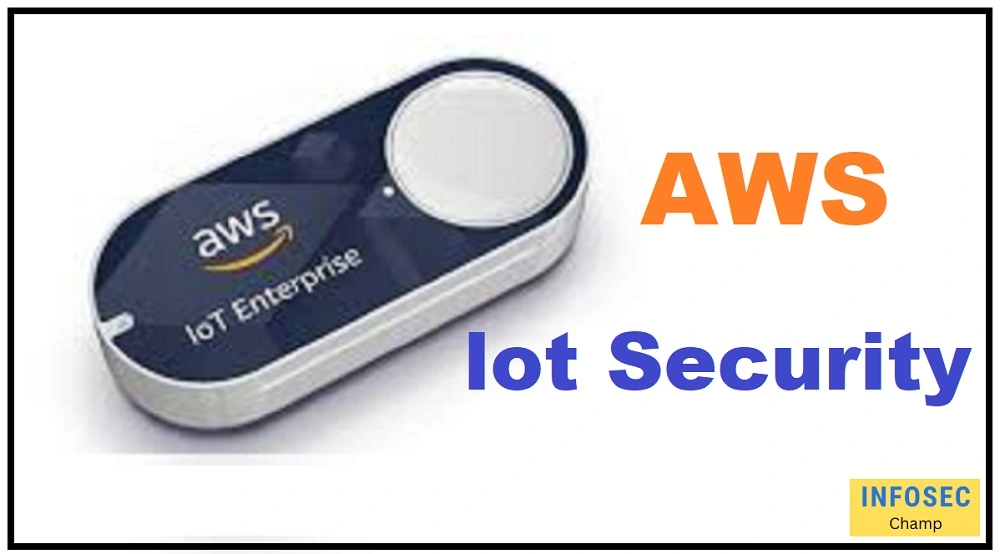
AWS lot security
Amazon Web Services (AWS) offers a range of solutions for securing IoT devices and systems. Some examples of AWS IoT security solutions include:
- AWS IoT Core: This solution provides secure communication and identity management for IoT devices. It uses secure protocols, such as HTTPS and SSL, to protect data transmitted between devices and supports device-to-cloud and cloud-to-device communication.
- AWS IoT Device Defender: This solution provides security monitoring and management capabilities for IoT devices. It includes features such as continuous device assessment, anomaly detection, and security recommendations.
- AWS IoT Device Management: This solution provides a range of device management capabilities, including the ability to remotely update and configure devices, as well as manage device security.
- AWS Greengrass: This solution allows organizations to run IoT workloads on devices while maintaining security and control. It includes features such as device management, security monitoring, and data protection.
- AWS Security Hub: This solution provides a centralized platform for managing and monitoring the security of IoT devices and systems. It includes features such as threat detection, vulnerability assessment, and security recommendations.
GCP IoT Security (Google IoT security)
Google Cloud Platform (GCP) offers a range of solutions for securing IoT devices and systems. Some examples of GCP IoT security solutions include:
- Cloud IoT Core: This solution provides secure communication and identity management for IoT devices. It uses secure protocols, such as HTTPS and SSL, to protect data transmitted between devices and supports device-to-cloud and cloud-to-device communication.
- Cloud IoT Edge: This solution allows organizations to run IoT workloads on devices while maintaining security and control. It includes features such as device management, security monitoring, and data protection.
- Cloud Security Command Center: This solution provides a centralized platform for managing and monitoring the security of IoT devices and systems. It includes features such as threat detection, vulnerability assessment, and security recommendations.
- Cloud Identity-Aware Proxy: This solution provides secure access to IoT devices by requiring users to authenticate before accessing resources.
- Cloud Key Management Service: This solution provides a secure platform for storing and managing encryption keys used to protect data transmitted by IoT devices.
Cisco IoT security
Cisco offers a range of solutions for securing IoT devices and systems. Some examples of Cisco IoT security solutions include:
- Cisco IoT System: This solution provides secure communication and identity management for IoT devices. It uses secure protocols, such as HTTPS and SSL, to protect data transmitted between devices and supports device-to-cloud and cloud-to-device communication.
- Cisco Stealthwatch: This solution provides security monitoring and management capabilities for IoT devices. It includes features such as anomaly detection, network segmentation, and security recommendations.
- Cisco Identity Services Engine: This solution provides identity and access management for IoT devices. It includes features such as two-factor authentication and role-based access control.
- Cisco Advanced Malware Protection: This solution helps to detect and prevent malware attacks on IoT devices by analyzing and identifying suspicious activity.
- Cisco Network Security: This solution provides a range of security measures for protecting networks, including firewalls (or WAF solution if its web services) and intrusion prevention systems.
Why IoT security is important
IoT security is important for several reasons:
- Data breaches: IoT devices often collect and transmit sensitive data, such as personal information, financial data, and health records. If this data is accessed by unauthorized individuals, it can lead to data breaches and potential harm to individuals and organizations.
- Reputation damage: A security breach involving IoT devices can damage the reputation of the organization, leading to a loss of trust and potential financial consequences.
- Loss of control: Without proper security measures, unauthorized individuals may be able to access and control IoT devices, leading to potential disruptions or damage.
- Legal consequences: Failing to adequately secure IoT devices may result in legal consequences, such as fines or lawsuits.
- National security risks: In some cases, insecure IoT devices may pose a risk to national security, such as in the case of connected infrastructure or military devices.
Overall, it is important to prioritize IoT security to protect data, reputation, control, legal compliance, and national security.
TrendMicro IoT security
Trend Micro is a cybersecurity company that offers a range of solutions for securing IoT devices and systems. Some examples of Trend Micro IoT security solutions include:
- Trend Micro IoT Security Platform: This solution provides a range of security measures for IoT devices, including identity and access management, network security, data security, and device security.
- Trend Micro Deep Discovery: This solution helps to detect and prevent malware attacks on IoT devices by analyzing and identifying suspicious activity.
- Trend Micro TippingPoint: This solution provides network security for IoT devices, including intrusion prevention and detection capabilities.
- Trend Micro Smart Protection Network: This solution provides real-time threat intelligence and protection for IoT devices.
- Trend Micro Mobile Security for Enterprise: This solution provides security for mobile devices, including those connected to IoT systems. It includes features such as threat detection, data protection, and device management.
IoT Cyber Security
IoT cyber security is the term used to describe the steps taken to safeguard IoT devices, the data they communicate, and the data they retain, against online dangers and unauthorized access. This can involve a variety of tasks and actions, such as putting in place security policies and procedures, identity and access management, making sure software and firmware are updated, putting in place network security measures, etc. implementing data security measures, implementing device security measures, implementing physical security measures, implementing cybersecurity insurance, and implementing security monitoring and management. Ensuring the security of IoT devices is important to protect data, reputation, control, legal compliance, and national security.
IoT device security
IoT device security refers to the measures taken to protect IoT devices from cyber threats and unauthorized access. This can include a range of activities and measures, such as:
- Implementing strong passwords and enabling device encryption: This can help to prevent unauthorized individuals from accessing devices.
- Using secure communication protocols: This can help to protect data transmitted between devices from being intercepted and stolen.
- Implementing identity and access management: This can involve using authentication and authorization measures to control access to devices and data.
- Regularly updating devices: This can help to prevent vulnerabilities from being exploited.
- Using tamper-resistant hardware: This can help to prevent devices from being tampered with or stolen.
- Using secure storage: This can help to protect devices from unauthorized access or tampering.
- Implementing physical security measures: This can involve securing the physical location of devices to prevent unauthorized access or tampering.
Overall, it is important to implement a range of security measures to protect IoT devices from cyber threats and unauthorized access.
IoT privacy and security challenges and solutions
There are several challenges that organizations face when it comes to ensuring the privacy and security of IoT devices:
- Lack of standardization: With the rapid growth of the IoT market, there is a lack of standardization in terms of security protocols and measures. This can make it difficult for organizations to ensure that all of their devices are secure.
- Complexity: IoT systems often involve a large number of connected devices, which can make it challenging to manage and secure them all.
- Limited security capabilities: Many IoT devices have limited processing power and storage, which can make it difficult to implement robust security measures.
- Limited visibility: It can be difficult to monitor and detect potential security threats in a complex IoT system.
- Lack of awareness: Many organizations and individuals may not be aware of the potential security risks associated with IoT devices, leading to a lack of proper security measures.
- Limited resources: Implementing effective IoT security measures can be costly and time-consuming, and many organizations may not have the resources to do so.
To address these challenges, organizations can implement a range of solutions, such as:
- Implementing security policies and procedures: This can involve establishing guidelines for securing IoT devices and ensuring that all devices are compliant with these policies.
- Implementing identity and access management: This can involve using authentication and authorization measures to control access to devices and data.
- Ensuring software and firmware updates: This can involve regularly updating devices with the latest security patches to prevent vulnerabilities from being exploited.
- Implementing network security measures: This can involve using firewalls and secure communication protocols to protect the network that the IoT devices are connected to.
- Implementing data security measures: This can involve using encryption and security protocols to protect data transmitted and stored by IoT devices.
- Implementing device security measures: This can involve using tamper-resistant hardware and secure storage to protect devices from tampering or theft.
- Implementing physical security measures: This can involve securing the physical location of devices to prevent unauthorized access or tampering.
- Implementing cybersecurity insurance: This can involve purchasing insurance to protect against the financial consequences of a cyber attack on an IoT device.
- Implementing security monitoring and management: This can involve regularly monitoring and managing the security of IoT devices to identify and address potential threats.
What are the 3 challenges IoT is currently facing?
The Internet of Things (IoT) is now confronting a number of difficulties:
- Security: Security is one of the biggest problems the IoT is now experiencing. IoT devices frequently gather and communicate sensitive data, making them susceptible to cyberattacks if they are not adequately secured. Data breaches, reputational harm, and legal repercussions could result from this.
- Standardization: Lack of uniformity in terms of communication protocols and security measures is another issue the IoT is facing. This might make it difficult for devices from various manufacturers to work together and for businesses to guarantee the security of their devices.
- Privacy: Privacy is a problem that the Internet of Things must also deal with. There may be worries about how this data is used and secured given how many IoT devices capture and communicate data about users and their activities. Privacy protection for users and their data is a key factor in the design and implementation of IoT devices.
What is RFID in IoT?
Using radio waves to convey data between devices is a technology known as radio-frequency identification (RFID). It is frequently used in the Internet of Things (IoT) to identify and track people and inanimate objects.
Three parts make up an RFID system: a reader, a tag, and an antenna. The RFID tag’s antenna picks up the radio frequency signal that the reader sends out. The reader receives data from the tag in response, which is used to locate and identify the object or person.
Access control, inventory management, supply chain management, and asset tracking are just a few of the many uses of RFID technology. It is especially helpful for applications where it is crucial to follow the whereabouts and motion of things or people in real time.
Is WiFi an RFID?
No, Radio-Frequency Identification, or RFID, technology is not WiFi. WiFi is a wireless networking technology that sends data between devices using radio waves. It is frequently employed to establish local area networks and link devices to the internet (LANs).
On the other hand, RFID is a technology that transmits data between devices using radio waves for the purposes of tracking and identifying. Three parts make up an RFID system: a reader, a tag, and an antenna. The RFID tag’s antenna picks up the radio frequency signal that the reader sends out. The reader receives data from the tag in response, which is used to locate and identify the object or person.
Despite the fact that both technologies transfer data using radio waves, their uses, and applications are distinct. While WiFi is frequently used for networking and communication, RFID is frequently utilized for identification and tracking.
What are NFC and RFID?
NFC (Near Field Communication) and RFID (Radio-Frequency Identification) are both technologies that use radio waves to transmit data between devices. However, there are some key differences between the two:
- Range: NFC has a shorter range than RFID, typically up to a few centimeters. RFID has a longer range, which can be up to several meters.
- Communication: NFC uses a “touch” or “tap” system, where two devices must be brought into close proximity to communicate. RFID uses a “read” system, where a reader sends out a radio frequency signal, which is received by the antenna of the RFID tag. The tag responds by transmitting data back to the reader.
- Applications: NFC is commonly used for contactless payment, access control, and information sharing between devices. RFID is commonly used for identification and tracking, such as in asset tracking and inventory management systems.
Overall, both NFC and RFID are technologies that use radio waves to transmit data between devices, but they have different ranges, communication methods, and applications.
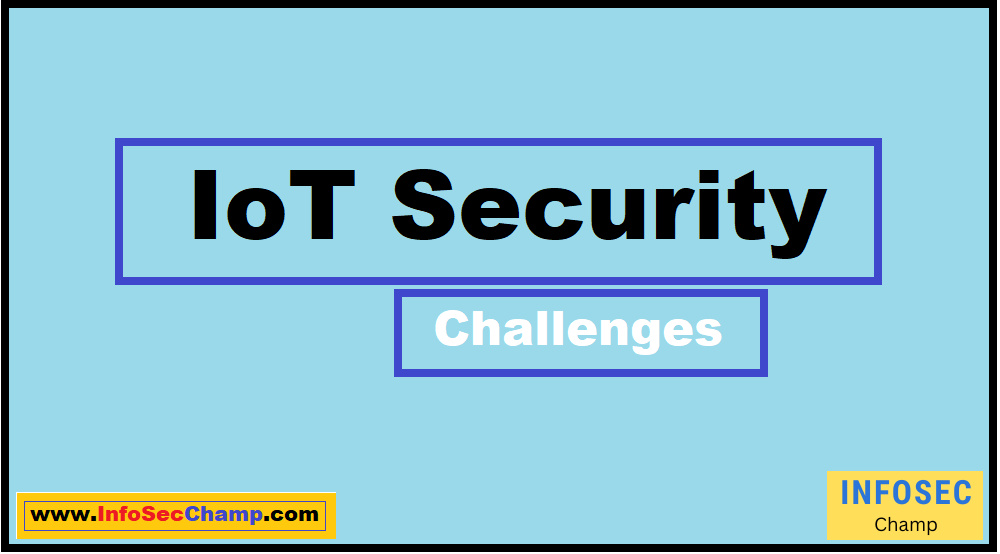
What are the challenges for secure IoT?
How do I secure my IoT device?
There are several steps that you can take to secure your Internet of Things (IoT) device:
- Use strong passwords: Use strong, unique passwords for your device and avoid using default passwords provided by the manufacturer.
- Enable device encryption: Enable device encryption to protect data transmitted and stored by the device.
- Use secure communication protocols: Use secure communication protocols, such as HTTPS or SSL, to protect data transmitted between the device and other devices or servers.
- Enable two-factor authentication: Enable two-factor authentication to add an extra layer of security when accessing the device.
- Keep devices updated: Regularly update your device with the latest software and firmware patches to fix vulnerabilities and prevent exploits.
- Use tamper-resistant hardware: Use tamper-resistant hardware to prevent unauthorized individuals from tampering with the device.
- Use secure storage: Store the device in a secure location to prevent unauthorized access or tampering.
- Implement physical security measures: Implement physical security measures, such as locking devices in a secure cabinet or room, to prevent unauthorized access or tampering.
- Use cybersecurity insurance: Consider purchasing cybersecurity insurance to protect against the financial consequences of a cyber attack on your device.
By taking these steps, you can help to secure your IoT device and protect it from cyber threats and unauthorized access.
Why IoT security is so critical?
IoT security is critical for several reasons:
- Data protection: IoT devices often collect and transmit sensitive data, such as personal information, financial data, and intellectual property. If these devices are not secured properly, they can be vulnerable to cyber attacks, which can lead to data breaches and the theft or misuse of data. Ensuring the security of IoT devices is important to protect data and prevent data breaches.
- Reputation: A security breach or data leak involving an IoT device can damage the reputation of an organization. Customers and stakeholders may lose trust in the organization and its products or services, which can lead to financial losses and legal consequences. Ensuring the security of IoT devices is important to protect the reputation and maintain trust.
- Control: If an IoT device is hacked, the attacker may be able to gain control of the device and use it to carry out malicious activities, such as spreading malware or conducting distributed denial of service (DDoS) attacks. Ensuring the security of IoT devices is important to maintain control over the devices and prevent them from being used for nefarious purposes.
- Legal compliance: Many countries have laws and regulations regarding the collection, use, and protection of personal data, and organizations that fail to comply with these laws may face fines, legal action, and reputational damage. Ensuring the security of IoT devices is important to ensure legal compliance and avoid these consequences.
- National security: In some cases, IoT devices may be used in critical infrastructures, such as power plants and transportation systems. If these devices are not secured properly, they can be vulnerable to cyber attacks, which can have serious consequences for national security. Ensuring the security of IoT devices is important to protect national security and prevent the disruption of critical services.
Overall, IoT security is critical to protect data, reputation, control, legal compliance, and national security.
FAQ:
1. What are the 4 stages of IoT?
There are generally four stages in the development and evolution of the Internet of Things (IoT):
- The Connected Device Stage: This stage involves the development and deployment of individual devices that are connected to the internet and can transmit and receive data. Examples of connected devices include smart thermostats, smart home appliances, and fitness trackers.
- The Connected System Stage: This stage involves the development and deployment of systems that connect multiple devices together. These systems may be connected to the internet or operate within a local area network (LAN). Examples of connected systems include smart home systems, industrial automation systems, and agriculture systems.
- The Connected Environment Stage: This stage involves the development and deployment of systems that connect devices and systems together to create a connected environment. These systems may be connected to the internet or operate within a LAN. Examples of connected environments include smart cities, smart factories, and smart campuses.
- The Connected World Stage: This stage involves the development and deployment of systems that connect devices, systems, and environments together on a global scale. These systems may be connected to the internet or operate within a LAN. Examples of connected worlds include the Internet of Things (IoT) and the Industrial Internet of Things (IIoT).
2. How IoT works with 5G technology?
The Internet of Things (IoT) works with 5G technology in several ways:
- Increased Connectivity: 5G technology provides faster speeds and lower latency than previous generations of wireless technology, allowing for more devices to be connected to the internet at once. This increased connectivity is essential for the widespread deployment of IoT devices.
- Enhanced Performance: 5G technology allows for faster data transmission and better performance of IoT devices, which can be important for applications such as real-time monitoring, video streaming, and remote control.
- Improved Energy Efficiency: 5G technology allows for more efficient communication between devices, which can help to reduce the power consumption of IoT devices and extend their battery life.
- Enhanced Security: 5G technology includes improved security measures, such as encryption and authentication, which can help to protect IoT devices and the data they transmit and store from cyber threats.
Overall, the integration of 5G technology with the IoT can help to enable a wide range of applications and improve the performance, connectivity, and security of IoT devices.
3. Which sensor is used in IoT?
There are many types of sensors that can be used in the Internet of Things (IoT). Some common examples include:
- Temperature sensors: These sensors measure temperature and can be used in applications such as thermostats, HVAC systems, and temperature monitoring systems.
- Humidity sensors: These sensors measure the humidity in the air and can be used in applications such as weather stations, greenhouses, and air quality monitoring systems.
- Pressure sensors: These sensors measure pressure and can be used in applications such as tire pressure monitoring systems, blood pressure monitors, and altitude sensors.
- Motion sensors: These sensors detect movement and can be used in applications such as security systems, activity-tracking devices, and smart home automation systems.
- Light sensors: These sensors measure the intensity of light and can be used in applications such as light meters, streetlights, and camera exposure systems.
- Proximity sensors: These sensors detect the presence of objects and can be used in applications such as smart lock systems, robotics, and automation systems.
- GPS sensors: These sensors measure the location of a device and can be used in applications such as location-tracking devices, asset-tracking systems, and navigation systems.

